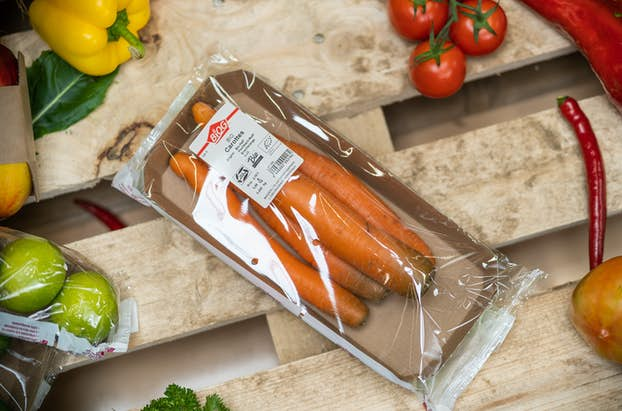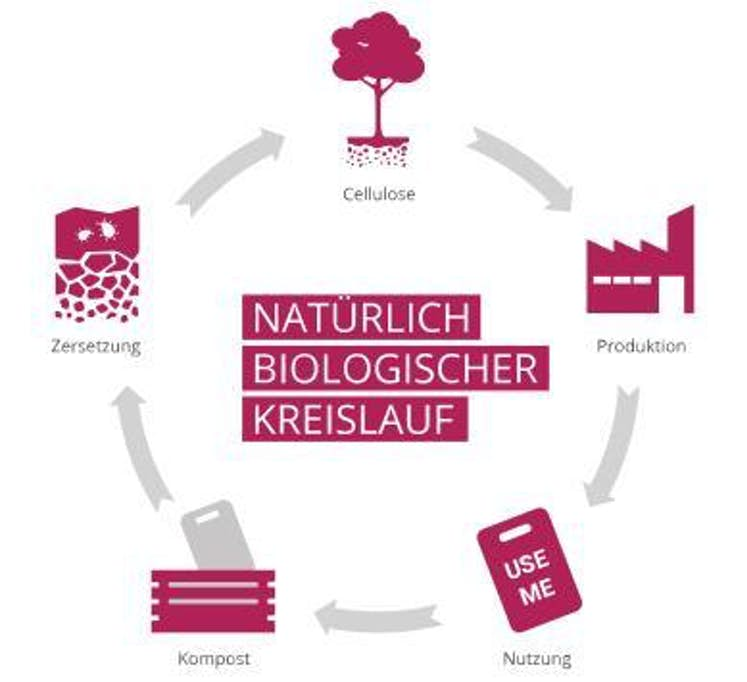

They are optimally tailored to the respective product and interfere with the environment as little as possible. At the same time, they fulfill their purpose of protection, extended shelf life and the clear separation of conventional goods in mixed retail, where in addition to organic goods, non-organic products are also offered. It is precisely there that it is important to use printed packaging to label organic goods so clearly that the consumer can find the organic food he is looking for without a doubt and without the risk of confusion.
The brand of the Bio-Bauere-Genossenschaft Lëtzebuerg and the organic wholesaler Biogros recently achieved a breakthrough in the packaging of fruit and vegetables. Thanks to the switch to cellulose, it is now plastic-free. The cellulose used is certified by the German TÜV as "home and garden compostable" - currently the highest environmental standard for film packaging worldwide. During composting, it dissolves into its original natural components, thus remaining part of a natural circular economy and protecting resources and the environment.
BIOG has been working tirelessly on alternative solutions for plastic for thirteen years. The bio-plastic PLA has been in use since 2008. Although it is obtained from regenerative raw materials, it can only be used in industrial composting plants. Now it has been replaced by the new cellulose film.
The reduction of packaging waste is one side of the coin, the avoidance of food waste due to the better shelf life in the cellulose packaging is the other, just as important. Not only do consumers and retailers benefit from lower waste rates for various items such as fresh salads, leafy vegetables, etc., but also the environment. A win for everyone.







